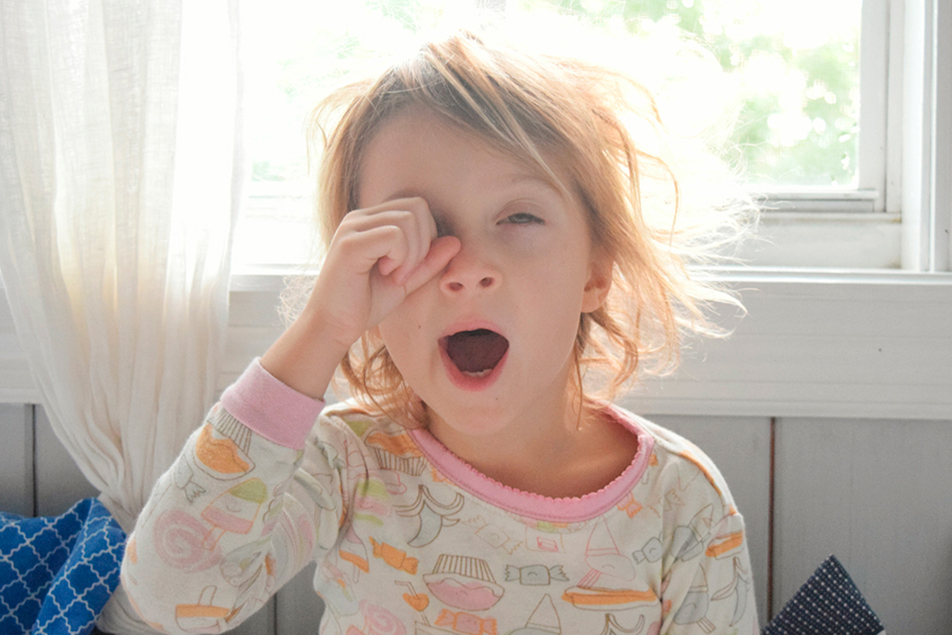Around the area, students are dusting off their backpacks and settling back into their school year routine. This means more activities, a larger demand for concentration and, as Aaron Roberts, MD, PPG – Sleep Medicine, would argue, a greater need for adequate sleep. He shares his thoughts on the sleep deficit among our youth population and what parents need to know to help their student thrive.
Sleep is a restorative process that plays an important role in a child’s health. Unfortunately, changes in today’s socio-economic environment have reduced the amount and quality of sleep across all age groups, especially as children get older. An increasing number of studies show sleep deprivation is linked to adverse health consequences such as obesity, depression, poor academic performance, drowsiness and risk for motor vehicle accidents. Symptoms can occur after only one night of sleep loss, and children who are chronically sleep deprived are often unaware of the negative effects.
Sleep requirements vary from person to person and are influenced by a number of factors, including age. The National Sleep Foundation (NSF) recommends that children ages 6-13 years old obtain 9-11 hours of sleep per night, and teenagers ages 14-17 obtain 8-10 hours per night. The NSF Sleep in America Poll found that 75 percent of high school students self-reported fewer than 8 hours of sleep per night by 12th grade compared with 16 percent of 6th graders. The actual amount of insufficient sleep may even be greater than indicated as self-reports of sleep duration are often overestimated when compared with objective measures via actigraphy.

Many organizations are now recognizing insufficient sleep as a serious health risk. In 2010, both the American Medical Association and the American Academy of Sleep Medicine jointly sponsored a resolution acknowledging this issue. One of the sleep objectives in the Healthy People 2020 initiatives is to increase the proportion of high school students who get sufficient sleep (defined as 8 hours or more per night).
The most common cause of insufficient sleep in children is poor sleep hygiene. Sleep hygiene refers to good habits that promote healthy sleep. There are many environmental and social determinants that influence sleep hygiene, and most are modifiable behaviors. Obtaining a thorough sleep history is essential in determining the specific areas of intervention for each child. There are several common factors that impact sleep and should be routinely screened for during clinic visits.
Two of the most common and modifiable unhealthy sleep behaviors are watching television and using electronic devices prior to bed. Today’s youth have grown up with electronic devices and view them as commonplace. According to the NSF’s 2006 Sleep in America Poll, 97 percent of adolescents had at least one media electronic device in their bedroom. Of those reported, over half had televisions and two-thirds had phones. Having a television in the bedroom has been associated with later bedtimes, longer sleep latencies, shorter total sleep durations, sleeping in on the weekends, and increased daytime sleepiness. It is recommended that total screen time be limited to 2 hours per day, use of screens after 9 p.m. be avoided, and electronic devices such as televisions be eliminated from the bedroom.
Consumption of caffeine and other wake-promoting agents such as energy supplements or over-the-counter medications can also be a factor. These stimulants are often used to combat daytime sleepiness, but their impact is usually unpredictable and limited. Caffeine can have detrimental effects on sleep, especially if consumed in the later afternoon or evening hours because the half-life is approximately 3-7 hours. Similar to studies in adults, effects are dose-dependent and are associated with increased sleep-onset latency, increased wake time after sleep onset, shorter total sleep duration and increased daytime sleepiness. It can also cause symptoms such as anxiety, tachycardia, and increased blood pressure when ingested in large amounts, and can produce the withdrawal symptoms of headache, difficulty concentrating, mood instability and sluggishness.
Other healthy sleep practices include avoiding direct light exposure before bedtime and exposure to light in the morning. Exposure to light (including blue light from electronics) suppresses melatonin production, although a very dim light in the bedroom such as a nightlight is acceptable. Establishing a consistent bedtime and wake time will help synchronize the sleep-wake cycle and maintain a regular internal clock. Children will often try to compensate for insufficient sleep by taking naps during the day and sleeping later on the weekends, but these behaviors can result in disrupted sleep-wake cycles, delayed sleep phase syndrome, and exacerbation of daytime sleepiness. It is recommended to keep consistent bedtimes and wake times with no more than an hour difference from day to day. It is also recommended to establish a bedtime routine that involves relaxing activities such as reading, taking a bath and listening to soothing music.
Many of the more common poor sleep habits are modifiable behaviors. An understanding of sleep deprivation and its profound effects on pediatric health will guide you as you provide effective anticipatory guidance and help mitigate this growing public health concern for your child.




